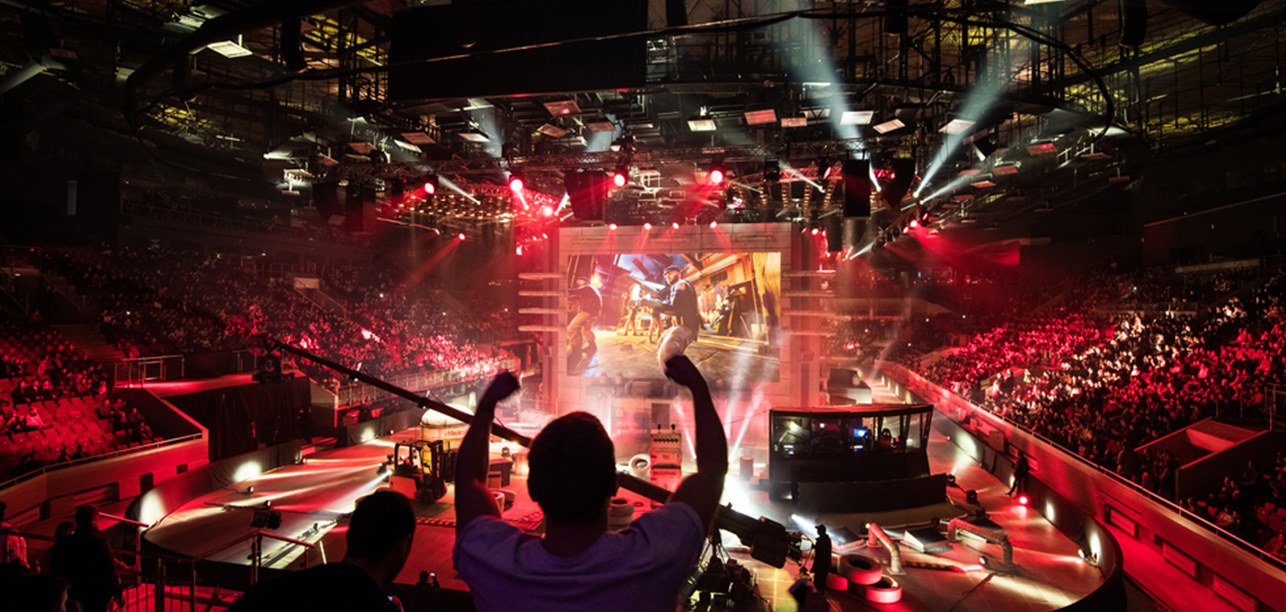
How Esports is Becoming a Billion-Dollar Industry
Over the past few years, esports has gone from being a niche pastime to a worldwide juggernaut. It has enthralled millions across the globe. The competitive gaming industry known as esports has grown like never before, with revenue now pouring in the billions. This is not a passing trend, this expansion. It represents a tectonic shift in entertainment and sports culture. This blog explores the growth factors, competitive gaming future, and how esports is shaping up to be a billion-dollar industry.
Esports is a coveted domain for many because it is a mix of technology, entertainment and competition. The industry keeps on growing as now more people watch their favourite gamers go at it. It attracts big investments and sponsorships. Misconceptions linger, with some still viewing esports as a hobby for bored teenagers. This blog will address some of these myths and explore the reality of esports as a thriving industry.
Key Benefits / Why It Matters

The Relevance of Esports in Today’s World
Esports’ relevance in today’s world cannot be overstated. Traditional sports grapple with declining viewership among younger audiences. Esports is capturing the attention of millennials and Gen Z. This demographic shift is crucial. These age groups represent the future of consumer spending and brand loyalty.
The esports industry has become a lucrative arena for advertisers and sponsors. With esports revenue growth showing no signs of slowing down, brands are eager to tap into this market. In 2023 alone, global esports revenues are projected to exceed £1 billion. It is driven by media rights, sponsorships, and advertising. This growth is substantial but also sustainable. This is due to the increasing accessibility of platforms and the growing popularity of online streaming services.
Real-Life Applications and Data-Backed Insights
One of the most compelling aspects of esports is its ability to transcend geographical boundaries. Traditional sports require physical infrastructure and local support. Esports can be accessed from anywhere with an internet connection. This global reach has allowed esports to tap into diverse markets, fostering a sense of community among gamers worldwide.
Data from Newzoo, a leading provider of market intelligence on the gaming industry, highlights the rapid growth of esports. According to their reports, the global esports audience is expected to reach 577 million by 2024. A significant portion of this growth is from emerging markets in Asia and Latin America. This expansion is indicative of the gaming industry expansion and the increasing acceptance of esports as a legitimate form of entertainment.
Step-by-Step Guide / Actionable Insights
Understanding the Esports Revenue Model
To appreciate how esports is becoming a billion-dollar industry, we must first understand its revenue model. The esports ecosystem comprises several revenue streams. Each of them contributing to the industry’s overall growth.
Media Rights and Broadcasting
Media rights form a significant part of esports revenue growth. More people tune in to watch live tournaments and events. Broadcasters and streaming platforms are willing to pay top dollar for exclusive rights. Platforms like Twitch and YouTube Gaming have become central hubs for esports content. These platforms attract millions of viewers daily.
Sponsorships and Advertising
Sponsorships and advertising are pivotal to the esports revenue model. Major brands, from tech giants to fast-food chains, are investing heavily in esports to reach younger audiences. These sponsorships often involve brand placements on team jerseys, in-game advertising, and event sponsorships.
Merchandise and Ticket Sales
Merchandise sales and ticketing for live events also contribute to the gaming industry’s expansion. Esports tournaments often draw large crowds. Fans are eager to buy branded merchandise and live event tickets. This aspect of the industry mirrors traditional sports. Merchandise and ticket sales are significant revenue drivers.
The Role of Technology in Esports Growth
The future of competitive gaming is closely tied to technological advancements. Innovations in virtual reality, augmented reality, and cloud gaming are set to revolutionise the esports experience. These technologies promise to enhance the spectator experience. It makes it more immersive and interactive.
Virtual Reality and Augmented Reality
Virtual reality (VR) and augmented reality (AR) are poised to transform how fans engage with esports. VR headsets can provide a 360-degree view of the action, allowing fans to feel as if they are part of the game. AR can overlay digital information on the real world. It enhanches the viewing experience with real-time stats and player information.
Cloud Gaming
Cloud gaming is another technological advancement that will shape the future of competitive gaming. Games are allowed to be streamed directly to devices without the high-end hardware. Cloud gaming makes esports more accessible to a broader audience. This accessibility is crucial for the continued growth of the industry, as it lowers the barrier to entry for new players and fans.
Additional Expert Tips & Common Mistakes to Avoid
Best Practices for Engaging with Esports
For brands and businesses looking to engage with the esports community, understanding the culture and dynamics of the industry is essential. Authenticity is key. Brands should genuinely engage with the community. Rather than merely exploiting it for marketing purposes, tends to resonate better with fans.
Common Mistakes and Misconceptions
One common mistake is underestimating the complexity and professionalism of esports. Many still view it as a hobby rather than a career. The reality is that professional esports players undergo rigorous training and compete at the highest levels. Another misconception is that esports is only popular among young males. In fact, the audience is diverse, with a growing number of female fans and players.
Advanced Insights / Expert Recommendations
The Future of Esports: Trends and Predictions
Looking ahead, the future of esports is bright, with several trends poised to drive further growth. One such trend is the integration of esports into traditional sports ecosystems. Major sports leagues, like the NBA and FIFA, have already launched their own esports divisions. This blurs the lines between traditional and digital sports.
Another trend is the increasing focus on mobile esports. As mobile technology improves, more games are being designed specifically for mobile platforms. This attracts a new wave of gamers. This shift is particularly evident in regions where mobile devices are the primary means of accessing the internet.
Unique Industry Perspectives
Industry experts predict that the next decade will see esports becoming more mainstream. It will have greater acceptance from traditional media and sports organisations. This shift will likely lead to increased investment in infrastructure. Investments in dedicated esports arenas and training facilities. This further cementing esports as a major player in the global entertainment landscape.
Esports Industry

The esports is a billion-dollar industry. This is a testament to the power of digital transformation and the changing preferences of consumers. As the industry continues to evolve, it offers exciting opportunities for players, brands, and investors. For those looking to capitalise on this growth, the time to act is now.
Esports is not the future of competitive gaming. It is the future of entertainment. As we look to the horizon, one thing is clear. Esports is here to stay, and its impact will be across industries for years to come. Are you ready to be part of this exciting journey?


